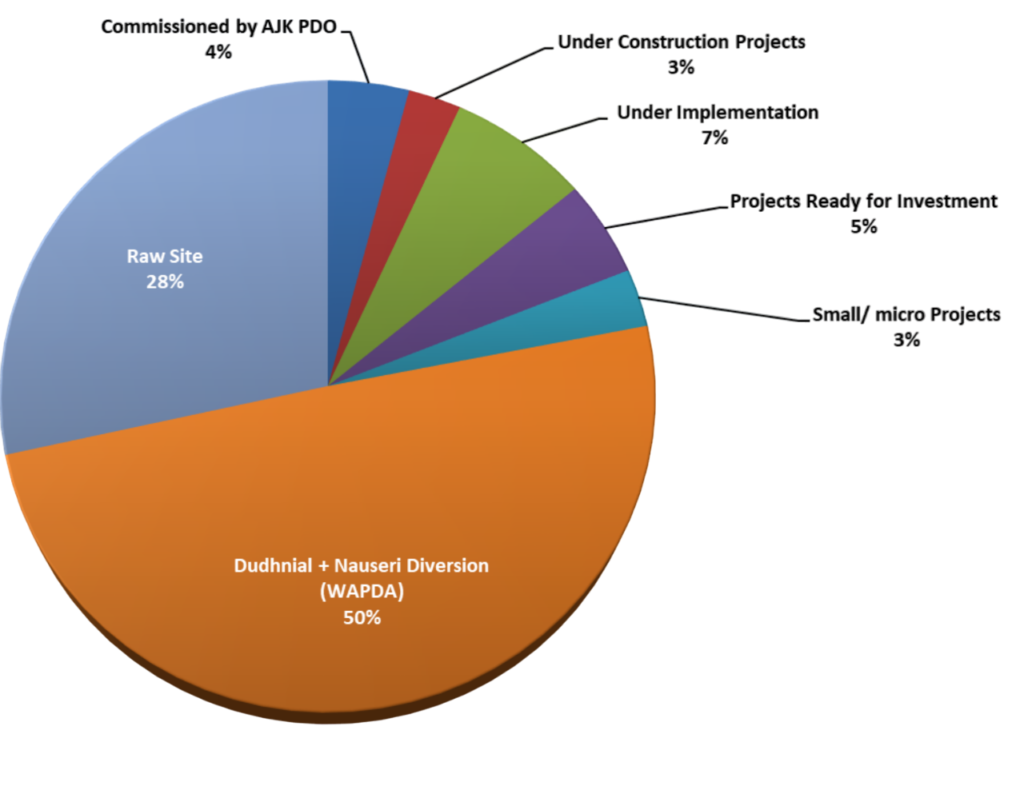Message from the Managing Director
Energy is more than just a resource—it’s the foundation of progress.
At AJK PDO, we believe that access to reliable and affordable energy is the cornerstone of development, we are focused on expanding our power generation capacity, upgrading infrastructure, and embracing renewable energy to create a brighter and greener future. Our vision is not just to meet the energy demands of today but to innovate for tomorrow. Through strategic planning, cutting-edge technology, and a dedicated team of professionals, we aim to create a resilient energy sector that supports the socio-economic aspirations of our region. We are driven by a commitment to bring sustainable energy solutions that not only power homes and businesses but also uplift communities and improve lives. As the Managing Director, I am proud to lead a team that works tirelessly to ensure reliable, affordable, and clean energy for everyone.
About us
The AJK Power Development Organization (AJK PDO) is a leading entity dedicated to the development and management of power generation and energy infrastructure in Azad Jammu and Kashmir. Our mission is to provide reliable, affordable, and sustainable energy solutions to drive the region’s socio-economic growth.
Focused on harnessing hydropower and renewable energy resources, AJK PDO plays a critical role in expanding the region’s energy capacity while promoting environmental sustainability. Through strategic projects, innovative technologies, and a commitment to excellence, we aim to build a resilient energy sector that meets the growing energy needs of households, businesses, and public institutions.
With a skilled team and collaborative partnerships, AJK PDO continues to deliver impactful energy projects, contributing to the prosperity and development of Azad Jammu and Kashmir. Together, we are working toward a brighter, energy-secure future.
The AJK Power Development Organization (AJK PDO) is a leading entity dedicated to the development and management of power generation and energy infrastructure in Azad Jammu and Kashmir. Our mission is to provide reliable, affordable, and sustainable energy solutions to drive the region’s socio-economic growth.
Focused on harnessing hydropower and renewable energy resources, AJK PDO plays a critical role in expanding the region’s energy capacity while promoting environmental sustainability. Through strategic projects, innovative technologies, and a commitment to excellence, we aim to build a resilient energy sector that meets the growing energy needs of households, businesses, and public institutions.
With a skilled team and collaborative partnerships, AJK PDO continues to deliver impactful energy projects, contributing to the prosperity and development of Azad Jammu and Kashmir. Together, we are working toward a brighter, energy-secure future.
AJK POWER DEVELOPMENT ORGANIZATION
About Us

The AJK Power Development Organization (AJK PDO) is a leading entity dedicated to the development and management of power generation and energy infrastructure in Azad Jammu and Kashmir. Our mission is to provide reliable, affordable, and sustainable energy solutions to drive the region’s socio-economic growth.
Focused on harnessing hydropower and renewable energy resources, AJK PDO plays a critical role in expanding the region’s energy capacity while promoting environmental sustainability. Through strategic projects, innovative technologies, and a commitment to excellence, we aim to build a resilient energy sector that meets the growing energy needs of households, businesses, and public institutions.
With a skilled team and collaborative partnerships, AJK PDO continues to deliver impactful energy projects, contributing to the prosperity and development of Azad Jammu and Kashmir. Together, we are working toward a brighter, energy-secure future.
In-Operation Projects in Public Sector
| Category | Capacity MW |
|---|---|
| Commissioned by AJK PDO | 83.34 |
| Under Construction Projects | 54.2 |
| Under Implementation | 145 |
| Projects Ready for Investment | 100 |
| Small/ micro Projects | 60 |
| Dudhnial + Nauseri Diversion (WAPDA) | 1002 |
| Raw Site | 575 |
| TOTAL | 4319.19 |

Latest News
Our Projects
Discover our portfolio showcasing the diverse projects that demonstrate our team's expertise and commitment to excellence.

Project Alpha
Lead Designer

Project Beta
Project Manager

Project Gamma
Senior Developer

Project Delta
Marketing Lead
Video Gallery
Call Us
(92) 5822924269

